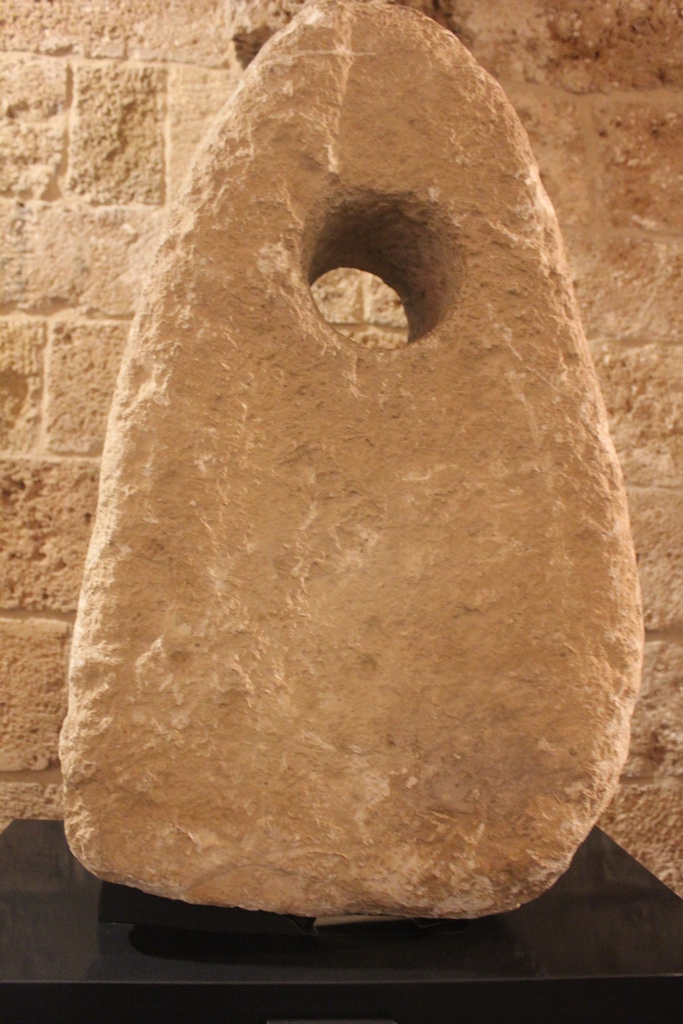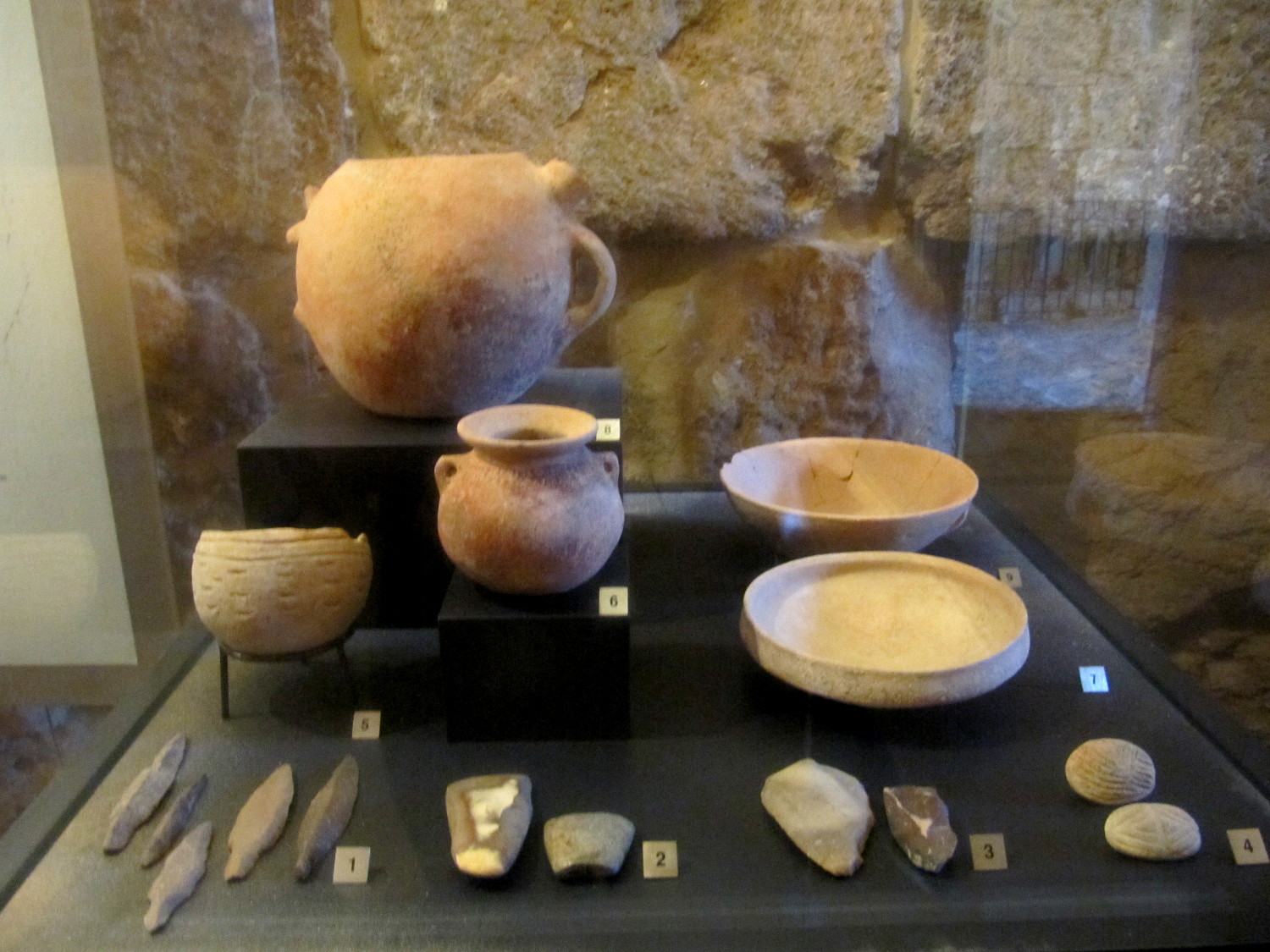Byblos Castle on:
[Wikipedia]
[Google]
[Amazon]
 Byblos Castle is a
Byblos Castle is a
 The castle was built by the
The castle was built by the

 The castle houses the Byblos site museum. It displays remains of the excavations undertaken on the site of the archeological preserve of Byblos, although the most important finds are displayed in the
The castle houses the Byblos site museum. It displays remains of the excavations undertaken on the site of the archeological preserve of Byblos, although the most important finds are displayed in the
 Byblos Castle is a
Byblos Castle is a Crusader castle
Crusader or Crusaders may refer to:
Military
* Crusader, a participant in one of the Crusades
* Convair NB-36H Crusader, an experimental nuclear-powered bomber
* Crusader tank, a British cruiser tank of World War II
* Crusaders (guerrilla), a C ...
in Byblos
Byblos ( ; gr, Βύβλος), also known as Jbeil or Jubayl ( ar, جُبَيْل, Jubayl, locally ; phn, 𐤂𐤁𐤋, , probably ), is a city in the Keserwan-Jbeil Governorate of Lebanon. It is believed to have been first occupied between 880 ...
, Lebanon
Lebanon ( , ar, لُبْنَان, translit=lubnān, ), officially the Republic of Lebanon () or the Lebanese Republic, is a country in Western Asia. It is located between Syria to the north and east and Israel to the south, while Cyprus li ...
. In Crusader times it was known as the Castle of Gibelet , also spelled Giblet, which belonged to the Genoese Embriaco family
The Embriaco were a prominent Genoese family, who played an important role in the history of the Crusader states. It also gave consuls, admirals and ambassadors to the Republic of Genoa.
The family ruled the city of Byblos (in present-day Leb ...
, Lords of the city. It is adjacent to the Phoenician archaeological site containing the ruins of the Temple of Baalat Gebal and the Temple of the Obelisks.
History
 The castle was built by the
The castle was built by the Crusaders
The Crusades were a series of religious wars initiated, supported, and sometimes directed by the Latin Church in the medieval period. The best known of these Crusades are those to the Holy Land in the period between 1095 and 1291 that were in ...
in the 12th century from indigenous limestone and the remains of Roman structures. The finished structure was surrounded by a moat. It belonged to the Genoese Embriaco family
The Embriaco were a prominent Genoese family, who played an important role in the history of the Crusader states. It also gave consuls, admirals and ambassadors to the Republic of Genoa.
The family ruled the city of Byblos (in present-day Leb ...
, whose members were the Lords of Gibelet from 1100 to the late 13th century. Saladin
Yusuf ibn Ayyub ibn Shadi () ( – 4 March 1193), commonly known by the epithet Saladin,, ; ku, سهلاحهدین, ; was the founder of the Ayyubid dynasty. Hailing from an ethnic Kurdish family, he was the first of both Egypt and ...
captured the town and castle in 1188 and partially dismantled the walls in 1190. Later, the Crusaders recaptured Byblos and rebuilt the fortifications of the castle in 1197. In 1369, the castle had to fend off an attack from Cypriot
Cypriot (in older sources often "Cypriote") refers to someone or something of, from, or related to the country of Cyprus.
* Cypriot people, or of Cypriot descent; this includes:
**Armenian Cypriots
**Greek Cypriots
**Maronite Cypriots
**Turkish C ...
vessels from Famagusta
Famagusta ( , ; el, Αμμόχωστος, Ammóchostos, ; tr, Gazimağusa or ) is a city on the east coast of Geography of Cyprus, Cyprus. It is located east of Nicosia District, Nicosia and possesses the deepest harbour of the island. Duri ...
.
The Byblos Castle has distinguished historical buildings for neighbors. Nearby stand a few Egyptian temples, the Phoenicia
Phoenicia () was an ancient thalassocratic civilization originating in the Levant region of the eastern Mediterranean, primarily located in modern Lebanon. The territory of the Phoenician city-states extended and shrank throughout their histor ...
n royal necropolis
A necropolis (plural necropolises, necropoles, necropoleis, necropoli) is a large, designed cemetery with elaborate tomb monuments. The name stems from the Ancient Greek ''nekropolis'', literally meaning "city of the dead".
The term usually im ...
and the Roman amphitheatre
Roman amphitheatres are theatres – large, circular or oval open-air venues with raised seating – built by the ancient Romans. They were used for events such as gladiator combats, '' venationes'' (animal slayings) and executions. About 230 Ro ...
.
Description
The Crusader castle of Gibelet is "the finest example" (Boas) of a new 12th-century type, which mixes the ''castrum
In the Roman Republic and the Roman Empire
The Roman Empire ( la, Imperium Romanum ; grc-gre, Βασιλεία τῶν Ῥωμαίων, Basileía tôn Rhōmaíōn) was the post-Roman Republic, Republican period of ancient Rome. As a po ...
''-type with the ''turris
''Turris'' is a genus of sea snails, marine gastropod mollusks in the family Turridae, the turrids.
Description
The generally large shells are variegated with spots. The fusiform shell is turriculated with a long, sharp spire. The aperture is ...
''-type castle: a roughly square set of walls strengthened by corner towers, built around a central donjon
A keep (from the Middle English ''kype'') is a type of fortified tower built within castles during the Middle Ages by European nobility. Scholars have debated the scope of the word ''keep'', but usually consider it to refer to large towers in ...
, thus forming two layers of defense.
Byblos Site Museum

 The castle houses the Byblos site museum. It displays remains of the excavations undertaken on the site of the archeological preserve of Byblos, although the most important finds are displayed in the
The castle houses the Byblos site museum. It displays remains of the excavations undertaken on the site of the archeological preserve of Byblos, although the most important finds are displayed in the National Museum of Beirut
The National Museum of Beirut ( ar, متحف بيروت الوطنيّ, ''Matḥaf Bayrūt al-waṭanī'' or French: Musée national de Beyrouth) is the principal museum of archaeology in Lebanon. The collection begun after World War I, and the m ...
. Moreover, the history of Byblos from prehistory to the medieval periods, is illustrated with thematic panels.
See also
* Temple of Baalat GebalFurther reading
*References
External links
* * * * {{coord, 34.12, N, 35.6464, E, source:kolossus-dewiki, display=title Buildings and structures completed in the 12th century Castles in Lebanon Crusader castles Tourist attractions in Lebanon Byblos Archaeological museums in Lebanon Museums of Ancient Near East in Lebanon History of Byblos